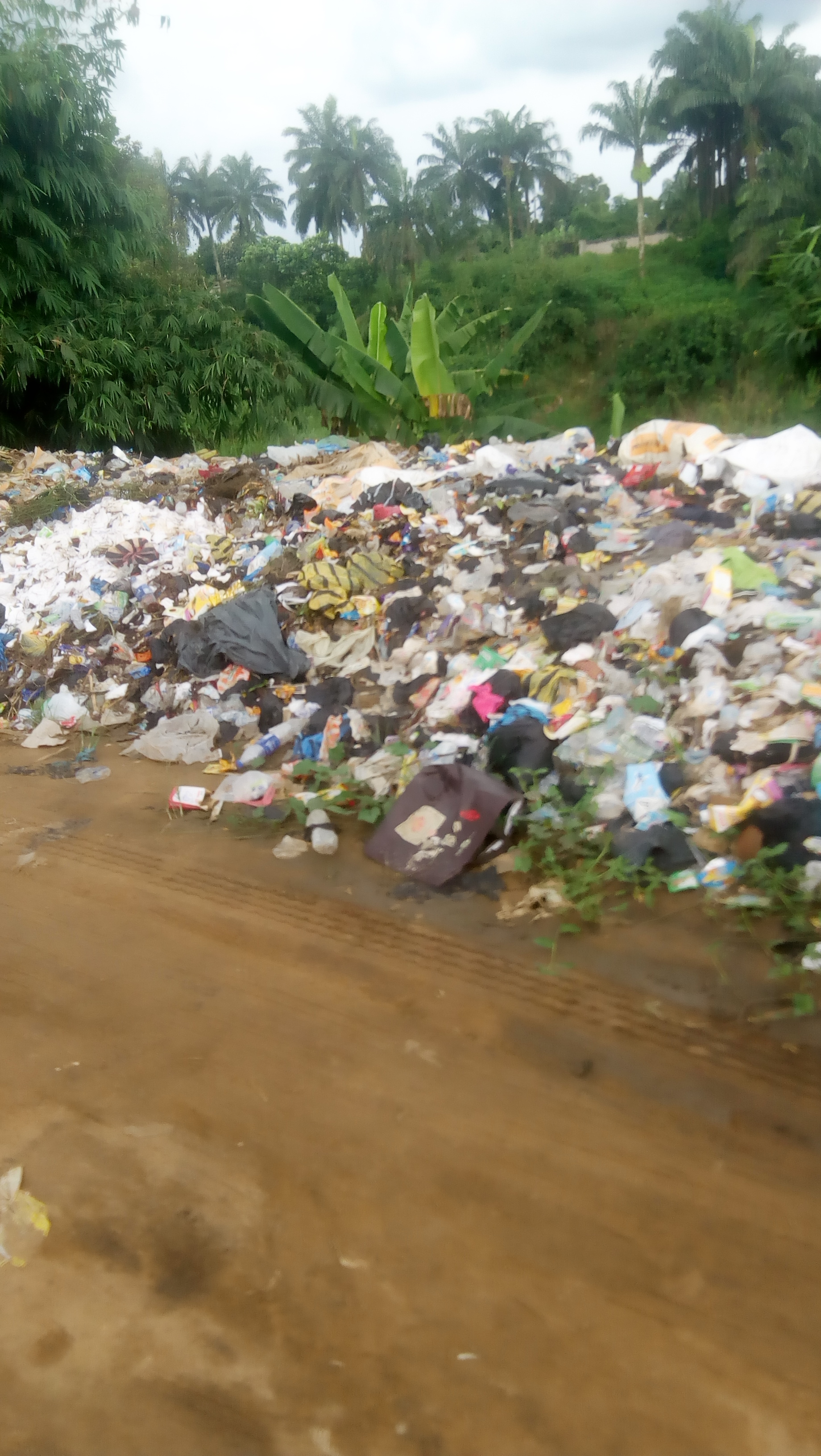When we visit some refuse dump sites, we may ask ourselves basic questions, such as:
(1) how can these menace be eliminated?
(2) can these materials dumped here ever be useful?
(3) how long will it take to fill the dump site?
(4)What is the best approach to managing these eyesores?
(5) and many more imaginable questions.
To appreciate the points, let us analyze the picture below, taken from a refuse dump site. As you watch the picture, try your best to identify the different materials that are dumped at the site.

REFUSE DUMP SITE BY THE SIDE OF A ROAD
From the picture, some of the materials that can easily be identified are as follows:
(1) plastics
(2) metals
(3) organic wastes, such as food scraps, spent vegetables, etc
(4)miscellaneous items.
A good knowledge of science and technology will help us to appreciate the fact that almost all the items that people have thrown away as refuse have reasonable values; thus they can be converted to wealth.
(1) PLASTICS. Plastics are of various types and different chemical compositions. Similar plastics can be grouped together for recycling into different plastic products. Some types that may be difficult to recycle can be used as fuel to heat a boiler which can generate steam that can be used to drive a turbine to generate electricity. So the plastics dumped as refuse sites can be converted to wealth in the form of new plastic products and electricity.
(2) METALS. Almost all metals can be recycled. Aluminum, copper, iron/steel, brass, bronze, lead, etc can easily be recycled, thus pieces of metals at the dump sites can easily be converted to wealth by changing their form from the crude dump site condition to very useful products.
(3) ORGANIC WASTES. Organic wastes are biodegradable materials (that is, materials that can easily decompose). Thus they can be put in a sealed pit and allowed to decay. During the decaying process, biogas (methane gas) are generated, which can be used for heating, cooking, generating electricity, or bottled in cylinders for sale. The remains from the decayed organic waste are compost, or organic manure, which can be used as a better alternative to chemical fertilizer. Thus organic wastes are very valuable materials.
(4) MISCELLANEOUS ITEMS. Miscellaneous items, such as glass, wooden products, clothes, etc. can either be recycled, or burnt to generate heat and/or electricity. Some can also be used as landfills.
The main reason people throw away these valuable items is probably due to a lack of knowledge, that most of these wastes can be converted to wealth. So as we observe the refuse dump site, let us use our imaginative mind to evaluate the substantial amount of wealth that is thrown away on the refuse dump sites. This may help to generate ideas about how to convert these wastes into wealth.

